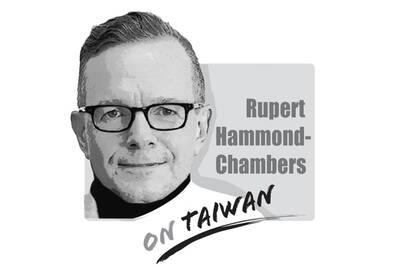On Monday, Beijing made its next move in its long-standing game to isolate Taiwan internationally: It announced the establishment of diplomatic relations with Panama, prompting the Democratic Progressive Party (DPP) government to announce that it would close its embassy in Panama and end bilateral cooperation and aid programs.
From Beijing’s perspective, this move might have the desired short-term effect of reducing the number of Taiwan’s formal political allies to 20, while also increasing pressure on President Tsai Ing-wen’s (蔡英文) government to formally adhere to the “one China” principle and the so-called “1992 consensus,” which is perceived by Taiwan as a slippery slope toward unification.
However, Beijing is miscalculating three important aspects:
First, Beijing’s increasing pressure on Taiwan is only strengthening the resolve of Taiwanese to resist such pressure.
Beijing still has not come to grips with Taiwan’s democracy. Taiwanese worked hard to get away from a recent history of repression by the then-Chinese Nationalist Party (KMT), who ruled the island under martial law from 1949 to 1987. They treasure and cherish their own Taiwanese national identity and do not desire to be part of any China, especially one ruled by a repressive Chinese Communist Party regime.
Second, under Tsai’s guidance, Taiwanese have been relatively content to accept the fuzzy “status quo,” under which the nation’s international status remains in a bit of a limbo.
As Beijing is starting to push harder to isolate Taiwan internationally, this strengthens the Taiwanese voices that argue that the “status quo” is useless, and that the nation might as well move toward a new constitutional framework, ditching the old “Republic of China” moniker under which it still maintains diplomatic ties.
The question then becomes: How do Taiwanese present themselves internationally? Do they continue to maintain diplomatic relations under the rather anachronistic “Republic of China” framework imposed by the KMT who came over with Chiang Kai-shek (蔣介石), or do they move toward a new constitutional framework based on the reality of sovereignty over Taiwan, Penghu and surrounding islands?
China’s hard-line approach is pushing Taiwan toward the second option.
The third point is how all of this is being perceived by the US and European nations.
These nations have watched Taiwan evolve into a vibrant and open democracy with a forward-looking economy. They have applauded that it is a key element in maintaining peace and stability in the region, and a responsible player internationally, both in terms of economic development and adherence to international rules.
Ironically, by pushing Taiwan into a corner, Beijing is forcing the US and other Western nations to strengthen their informal, but substantial, ties with Taiwan.
A prime example is the Taiwan-US Global Cooperation Training Framework program, specifically designed by the administration of former US president Barack Obama to circumvent the blockades Beijing is throwing up against Taiwan’s participation in international organizations.
Beijing’s approach is having the opposite of its intended effect. Instead of trying to isolate Taiwan and force it into submission, Beijing should see this as a window of opportunity and start working toward a positive and constructive relationship across the Taiwan Strait, in which the two nations normalize relations and eventually recognize each other as friendly neighbors.
Gerrit van der Wees is a former Dutch diplomat and former editor of Taiwan Communique. He now teaches the history of Taiwan at George Mason University in Fairfax, Virginia.
The gutting of Voice of America (VOA) and Radio Free Asia (RFA) by US President Donald Trump’s administration poses a serious threat to the global voice of freedom, particularly for those living under authoritarian regimes such as China. The US — hailed as the model of liberal democracy — has the moral responsibility to uphold the values it champions. In undermining these institutions, the US risks diminishing its “soft power,” a pivotal pillar of its global influence. VOA Tibetan and RFA Tibetan played an enormous role in promoting the strong image of the US in and outside Tibet. On VOA Tibetan,
Former minister of culture Lung Ying-tai (龍應台) has long wielded influence through the power of words. Her articles once served as a moral compass for a society in transition. However, as her April 1 guest article in the New York Times, “The Clock Is Ticking for Taiwan,” makes all too clear, even celebrated prose can mislead when romanticism clouds political judgement. Lung crafts a narrative that is less an analysis of Taiwan’s geopolitical reality than an exercise in wistful nostalgia. As political scientists and international relations academics, we believe it is crucial to correct the misconceptions embedded in her article,
Sung Chien-liang (宋建樑), the leader of the Chinese Nationalist Party’s (KMT) efforts to recall Democratic Progressive Party (DPP) Legislator Lee Kun-cheng (李坤城), caused a national outrage and drew diplomatic condemnation on Tuesday after he arrived at the New Taipei City District Prosecutors’ Office dressed in a Nazi uniform. Sung performed a Nazi salute and carried a copy of Adolf Hitler’s Mein Kampf as he arrived to be questioned over allegations of signature forgery in the recall petition. The KMT’s response to the incident has shown a striking lack of contrition and decency. Rather than apologizing and distancing itself from Sung’s actions,

US President Trump weighed into the state of America’s semiconductor manufacturing when he declared, “They [Taiwan] stole it from us. They took it from us, and I don’t blame them. I give them credit.” At a prior White House event President Trump hosted TSMC chairman C.C. Wei (魏哲家), head of the world’s largest and most advanced chip manufacturer, to announce a commitment to invest US$100 billion in America. The president then shifted his previously critical rhetoric on Taiwan and put off tariffs on its chips. Now we learn that the Trump Administration is conducting a “trade investigation” on semiconductors which